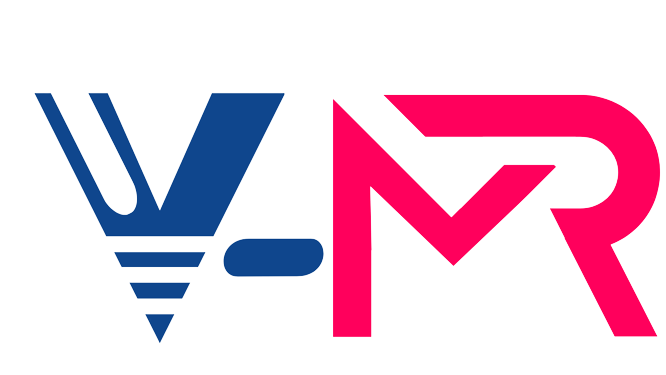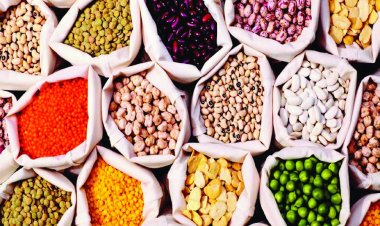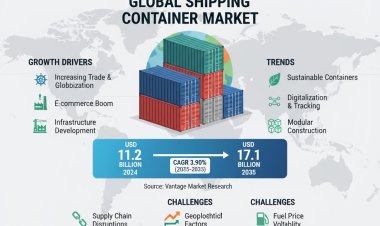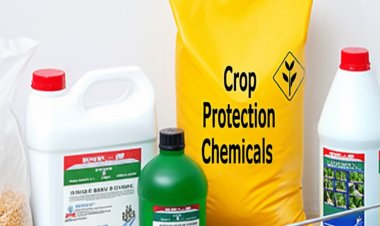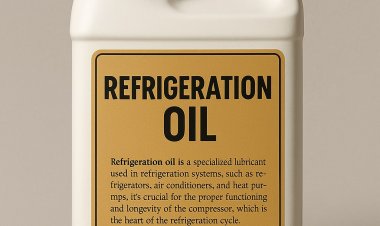Flexible Packaging Market CAGR Projected At 4.20% Through 2030
Explore the global flexible packaging market, including current valuations, key materials, industry drivers, market dynamics, challenges, regional insights, major players, and future trends shaping the industry through 2030.
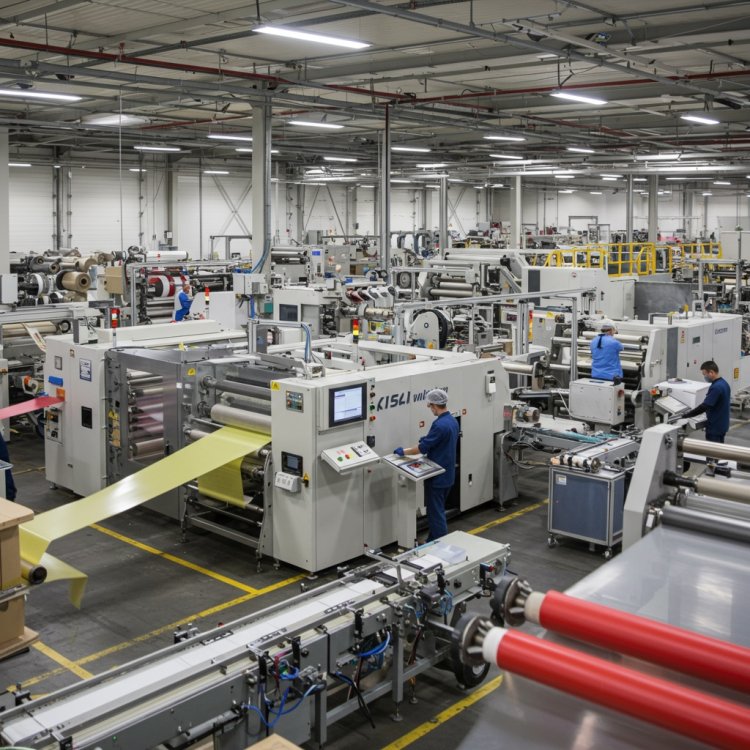
Overview of the Flexible Packaging Market
The Flexible Packaging Market has emerged as a dynamic and rapidly evolving segment within the broader packaging industry, driven by its adaptability, cost-effectiveness, and ability to meet the changing needs of both manufacturers and consumers. According to analysts at Vantage Market Research, the Global Flexible Packaging Market was valued at USD 258.42 billion in 2022 and is projected to reach USD 359.13 billion by 2030, reflecting a robust compound annual growth rate (CAGR) of 4.20% during the forecast period. This impressive growth trajectory underscores the increasing preference for flexible packaging solutions across a wide array of industries, including food and beverage, pharmaceuticals, personal care, and household products.
Flexible packaging is characterized by its use of non-rigid materials, which can be easily shaped or molded to accommodate various product types and sizes. The key materials used in flexible packaging include plastics (such as polyethylene, polypropylene, and polyethylene terephthalate), paper, aluminum foil, and bioplastics. These materials are often combined in multilayer structures to enhance barrier properties, durability, and printability, ensuring product protection and shelf appeal. The versatility of flexible packaging allows for the creation of pouches, bags, wraps, sachets, and films, catering to diverse packaging requirements.
The food and beverage industry remains the dominant force driving the growth of the flexible packaging market, accounting for a significant share of global demand. The need for convenient, lightweight, and resealable packaging solutions has fueled the adoption of flexible formats for snacks, ready-to-eat meals, dairy products, beverages, and more. Additionally, the pharmaceutical sector has increasingly turned to flexible packaging for its ability to provide tamper-evident, moisture-resistant, and child-resistant solutions. Personal care and household product manufacturers are also leveraging flexible packaging to enhance product differentiation and consumer convenience.
As consumer preferences continue to evolve, the flexible packaging market is witnessing a shift towards sustainable and eco-friendly materials, driven by growing environmental awareness and regulatory pressures. The integration of advanced printing technologies, smart packaging features, and digitalization is further transforming the landscape, enabling brands to engage consumers and streamline supply chains. Overall, the flexible packaging market stands at the forefront of innovation, offering a compelling value proposition for both businesses and end-users.
Stay Updated with Market Movements: Get Your Sample Report!
Key Takeaways
- The global flexible packaging market is projected to grow from USD 258.42 billion in 2022 to USD 359.13 billion by 2030, at a CAGR of 4.20%.
- Flexible packaging uses a variety of materials, including plastics, paper, aluminum foil, and bioplastics, often in multilayer structures for enhanced performance.
- The food and beverage industry is the largest end-user, with pharmaceuticals and personal care also driving significant demand.
- E-commerce growth is increasing the need for lightweight, durable, and cost-effective packaging solutions.
- Sustainability is a major market driver, with rising demand for recyclable, compostable, and biodegradable packaging options.
- Technological advancements, such as digital printing and smart packaging, are enabling greater customization and improved product safety.
- The industry faces challenges like high raw material costs, complex recycling processes for multilayer packaging, and competition from rigid packaging alternatives.
- Asia Pacific leads the market in both production and consumption, while North America and Europe are at the forefront of innovation and sustainability efforts.
- Major industry players (e.g., Amcor, Berry Global, Sealed Air, Mondi) are focusing on eco-friendly solutions, innovation, and strategic partnerships.
- Future trends include a shift toward circular economy practices, increased demand for biodegradable and recyclable packaging, and greater emphasis on customization and smart packaging features.
Market Dynamics
The flexible packaging market is shaped by a complex interplay of drivers, restraints, opportunities, and trends that collectively influence its growth and development. One of the primary drivers is the increasing demand for convenience and portability in consumer goods. Flexible packaging offers lightweight, easy-to-carry, and resealable options that align with the fast-paced lifestyles of modern consumers. This has led to widespread adoption in sectors such as food and beverage, where on-the-go consumption and portion control are key considerations.
Another significant driver is the growing emphasis on sustainability. As environmental concerns gain prominence, both consumers and regulatory bodies are pushing for packaging solutions that minimize waste, reduce carbon footprints, and promote recyclability. Flexible packaging, with its potential for material reduction and lower transportation costs, is well-positioned to address these demands. The development of biodegradable, compostable, and recyclable materials is opening new avenues for market expansion.
However, the market is not without its challenges. One of the main restraints is the complexity of recycling flexible packaging, particularly multilayer structures that combine different materials. These structures, while offering superior barrier properties, are often difficult to separate and process in conventional recycling streams. Additionally, fluctuations in raw material prices and supply chain disruptions can impact production costs and profitability for manufacturers.
Opportunities abound in the realm of technological innovation. Advancements in digital printing, smart packaging, and automation are enabling greater customization, traceability, and efficiency in packaging operations. The rise of e-commerce has also created new opportunities for flexible packaging, as brands seek solutions that can withstand the rigors of shipping while providing an attractive unboxing experience for consumers.
Key trends shaping the market include the adoption of mono-material packaging for easier recycling, the integration of QR codes and NFC tags for enhanced consumer engagement, and the use of renewable materials to reduce environmental impact. The shift towards circular economy practices, where packaging is designed for reuse, recycling, or composting, is gaining momentum and is expected to drive future growth.
In summary, the flexible packaging market is characterized by dynamic market forces that present both challenges and opportunities. Companies that can navigate these complexities and innovate in response to evolving consumer and regulatory demands are well-positioned to thrive in this competitive landscape.
Factors Driving Market Growth
Several key factors are propelling the growth of the flexible packaging market, with the influence of e-commerce, the need for sustainable solutions, and technological advancements standing out as major contributors.
The explosive growth of e-commerce has fundamentally transformed the packaging landscape. Online retail requires packaging that is not only protective and durable but also lightweight and cost-effective to ship. Flexible packaging meets these requirements by offering superior product protection, tamper evidence, and the ability to accommodate a wide range of product shapes and sizes. The rise of direct-to-consumer brands and subscription services has further accelerated the demand for flexible packaging, as companies seek to create memorable unboxing experiences and reduce shipping costs.
Sustainability is another powerful driver shaping the future of flexible packaging. Consumers are increasingly aware of the environmental impact of packaging waste, prompting brands to seek out eco-friendly alternatives. Flexible packaging, by virtue of its lightweight nature and potential for material reduction, offers a lower environmental footprint compared to traditional rigid packaging. Innovations in bioplastics, compostable films, and recyclable mono-material structures are enabling brands to meet sustainability goals while maintaining product integrity and shelf life.
Advancements in technology and research and development (R&D) are also fueling market growth. Digital printing technologies have revolutionized the way brands approach packaging design, enabling short runs, rapid prototyping, and personalized packaging at scale. Smart packaging solutions, such as QR codes, RFID tags, and temperature indicators, are enhancing supply chain visibility, product authentication, and consumer engagement. R&D efforts are focused on developing new materials with improved barrier properties, extended shelf life, and enhanced recyclability, further expanding the application scope of flexible packaging.
Moreover, the ability to customize packaging formats and designs to meet specific product and consumer needs is a significant advantage of flexible packaging. Brands can differentiate themselves in crowded markets by leveraging unique shapes, vibrant graphics, and interactive features. This level of customization is particularly valuable in the food, beverage, and personal care sectors, where packaging plays a critical role in influencing purchase decisions.
In conclusion, the flexible packaging market is being driven by a confluence of factors, including the rise of e-commerce, the imperative for sustainable solutions, and ongoing technological innovation. These drivers are reshaping the industry and creating new opportunities for growth and differentiation.
Challenges Facing the Flexible Packaging Industry
Despite its many advantages, the flexible packaging industry faces a range of challenges that must be addressed to sustain long-term growth and competitiveness. One of the most pressing issues is the high cost and volatility of raw materials. The primary materials used in flexible packaging, such as plastics, aluminum, and specialty papers, are subject to price fluctuations driven by global supply and demand dynamics, geopolitical tensions, and environmental regulations. These cost pressures can erode profit margins and make it difficult for manufacturers to maintain competitive pricing.
Another significant challenge is the complexity of recycling flexible packaging, particularly multilayer structures that combine different materials to achieve desired barrier properties. While these structures offer superior protection and functionality, they are often incompatible with existing recycling infrastructure, leading to low recycling rates and increased environmental impact. The lack of standardized recycling processes and limited consumer awareness further exacerbate the problem, making it difficult to achieve circular economy goals.
Competition from rigid packaging alternatives also poses a challenge for the flexible packaging industry. Rigid packaging, such as glass bottles, metal cans, and plastic containers, offers advantages in terms of product protection, shelf stability, and recyclability. In certain applications, particularly those requiring high barrier properties or long shelf life, rigid packaging may be preferred over flexible formats. Additionally, consumer perceptions of quality and premiumization can influence packaging choices, with some consumers associating rigid packaging with higher value.
Regulatory pressures and evolving consumer expectations are adding to the complexity of the market. Governments around the world are implementing stricter regulations on packaging materials, waste management, and recyclability, requiring manufacturers to invest in new technologies and processes to comply. At the same time, consumers are demanding greater transparency, sustainability, and convenience, challenging brands to innovate while managing costs and operational complexity.
To overcome these challenges, industry stakeholders are investing in research and development to create new materials and packaging formats that balance performance, cost, and sustainability. Collaboration across the value chain, from material suppliers to brand owners and recyclers, is essential to drive innovation and develop scalable solutions. Education and awareness campaigns are also critical to encourage responsible disposal and recycling of flexible packaging.
In summary, the flexible packaging industry must navigate a range of challenges, including raw material costs, recycling complexities, competition from rigid packaging, and regulatory pressures. Addressing these issues will require a concerted effort from all stakeholders to ensure the continued growth and sustainability of the market.
Flexible Packaging Market Key Market Segments
The flexible packaging market is characterized by a diverse range of segments, each catering to specific industry needs and consumer preferences. Understanding these key market segments is essential for stakeholders to identify growth opportunities and tailor their strategies accordingly.
By Material Type:
Flexible packaging utilizes a variety of materials, with plastics (such as polyethylene, polypropylene, and polyethylene terephthalate) being the most widely used due to their versatility, durability, and cost-effectiveness. Other materials include aluminum foil, paper, and bioplastics. Each material offers unique properties; for instance, aluminum foil provides excellent barrier protection against moisture and oxygen, while paper is favored for its recyclability and eco-friendly image. The choice of material often depends on the product being packaged, regulatory requirements, and sustainability goals.
By Packaging Type:
The market is segmented into several packaging types, including pouches, bags, wraps, sachets, and films. Pouches, both stand-up and flat, have gained significant popularity due to their convenience, resealability, and ability to display attractive graphics. Bags and wraps are commonly used for snacks, bakery products, and fresh produce, while films are extensively used for wrapping and laminating applications. The selection of packaging type is influenced by factors such as product shelf life, ease of use, and branding considerations.
By Printing Technology:
Printing plays a vital role in flexible packaging, enabling brands to communicate product information, enhance visual appeal, and differentiate themselves on the shelf. The main printing technologies used in the market include flexography, rotogravure, digital printing, and offset printing. Flexography is widely adopted for its cost-effectiveness and suitability for high-volume production, while digital printing is gaining traction for its ability to offer customization and shorter lead times.
By End-Use Industry:
Flexible packaging serves a broad spectrum of end-use industries, with food and beverages being the largest segment. This is followed by pharmaceuticals, personal care and cosmetics, household products, and industrial applications. In the food and beverage sector, flexible packaging is used for snacks, dairy products, beverages, frozen foods, and ready-to-eat meals. The pharmaceutical industry relies on flexible packaging for blister packs, sachets, and medical device packaging, where product safety and regulatory compliance are paramount.
By Geography:
Geographically, the market is segmented into North America, Europe, Asia-Pacific, Latin America, and the Middle East & Africa. Each region exhibits distinct market dynamics, influenced by factors such as economic development, consumer behavior, regulatory frameworks, and the presence of key industry players.
In conclusion, the flexible packaging market’s segmentation reflects its adaptability and wide-ranging applications. By understanding the nuances of each segment, companies can better align their product offerings with market demands and capitalize on emerging trends.
Regional Growth Insights
The global flexible packaging market exhibits significant regional variations, with Asia Pacific, North America, and Europe emerging as key contributors to market growth. Each region presents unique trends, opportunities, and challenges that shape the overall market landscape.
Asia Pacific dominates the global flexible packaging market, accounting for the largest share of both production and consumption. The region's rapid economic growth, expanding middle class, and increasing urbanization have fueled demand for packaged food, beverages, pharmaceuticals, and personal care products. Countries such as China, India, Japan, and South Korea are at the forefront of this growth, driven by rising disposable incomes, changing lifestyles, and a growing preference for convenience-oriented products. The presence of a large and cost-competitive manufacturing base, coupled with investments in advanced packaging technologies, has further strengthened Asia Pacific's position as a global hub for flexible packaging.
In North America, the flexible packaging market is characterized by a strong focus on innovation, sustainability, and regulatory compliance. The United States and Canada are leading markets, with a high level of adoption of flexible packaging across food, beverage, healthcare, and personal care sectors. The region's mature retail infrastructure, well-established e-commerce ecosystem, and emphasis on product differentiation have driven demand for customized and value-added packaging solutions. Sustainability initiatives, such as the use of recycled content and the development of recyclable and compostable materials, are gaining traction in response to consumer and regulatory pressures.
Europe is another significant market for flexible packaging, with a strong emphasis on environmental sustainability and circular economy practices. The European Union's stringent regulations on packaging waste, recyclability, and extended producer responsibility have spurred innovation in material development and recycling processes. Countries such as Germany, France, the United Kingdom, and Italy are leading adopters of sustainable packaging solutions, with a focus on reducing single-use plastics and promoting closed-loop systems. The region's commitment to sustainability is driving the adoption of mono-material structures, biodegradable films, and reusable packaging formats.
Emerging markets in Latin America, the Middle East, and Africa are also experiencing robust growth in flexible packaging demand. Rapid urbanization, population growth, and rising consumer awareness are driving the adoption of packaged goods, creating new opportunities for flexible packaging manufacturers. Investments in local production facilities, distribution networks, and technology transfer are enabling these regions to meet growing demand and enhance market competitiveness.
In conclusion, regional dynamics play a critical role in shaping the flexible packaging market. Asia Pacific leads in terms of scale and growth potential, while North America and Europe are at the forefront of innovation and sustainability. Emerging markets offer significant untapped opportunities, making the global flexible packaging market a diverse and dynamic landscape.
Major Players in the Flexible Packaging Market
The flexible packaging market is highly competitive, with a diverse array of global and regional players vying for market share. Major industry leaders are distinguished by their scale, technological capabilities, and commitment to innovation and sustainability.
Key players in the global flexible packaging market include Amcor plc, Berry Global Inc., Sealed Air Corporation, Mondi Group, Huhtamaki Oyj, Constantia Flexibles, Coveris Holdings S.A., Sonoco Products Company, and Bemis Company (now part of Amcor). These companies have established strong market positions through a combination of organic growth, strategic acquisitions, and investments in research and development.
Innovation is a central focus for leading flexible packaging companies. Amcor, for example, has made significant investments in the development of recyclable and compostable packaging solutions, as well as advanced barrier films that extend product shelf life. Berry Global has prioritized the use of recycled content and the development of lightweight packaging formats to reduce environmental impact. Sealed Air is known for its focus on automation, digital printing, and smart packaging technologies that enhance supply chain efficiency and consumer engagement.
Sustainability is a key differentiator in the competitive landscape. Major players are aligning their strategies with global sustainability goals, such as the Ellen MacArthur Foundation's New Plastics Economy initiative, which aims to eliminate plastic waste and promote circular economy practices. Companies are investing in the development of mono-material structures, bio-based films, and closed-loop recycling systems to meet regulatory requirements and consumer expectations.
Partnerships and collaborations are also shaping the flexible packaging market. Industry leaders are working closely with material suppliers, technology providers, brand owners, and recyclers to drive innovation and scale sustainable solutions. Joint ventures, licensing agreements, and open innovation platforms are enabling companies to accelerate the development and commercialization of new packaging formats.
In addition to global players, regional and local companies play a vital role in meeting the specific needs of local markets. These companies often focus on niche applications, customized solutions, and rapid response to changing market dynamics.
Overall, the flexible packaging market is characterized by intense competition, rapid innovation, and a strong focus on sustainability. Companies that can leverage their technological capabilities, global reach, and collaborative networks are well-positioned to lead the market and capture emerging opportunities.
Future Trends and Opportunities
Looking ahead, the flexible packaging market is poised for continued transformation, driven by emerging trends and new opportunities that reflect the evolving needs of consumers, brands, and regulators.
One of the most significant trends is the shift towards circular economy practices. The traditional linear model of "take, make, dispose" is being replaced by a circular approach that emphasizes resource efficiency, waste reduction, and the reuse or recycling of materials. Flexible packaging companies are investing in the design of packaging that can be easily collected, sorted, and recycled, as well as the development of reusable and refillable packaging formats. Collaboration across the value chain is essential to create closed-loop systems that minimize environmental impact and maximize resource recovery.
The demand for biodegradable and recyclable packaging options is expected to accelerate in the coming years. Consumers are increasingly seeking products that align with their values, and brands are responding by offering packaging made from renewable, compostable, or easily recyclable materials. Innovations in bioplastics, cellulose-based films, and water-soluble packaging are expanding the range of sustainable options available to manufacturers and consumers alike.
Customization and personalization are also emerging as key drivers of future growth. Advances in digital printing and smart packaging technologies are enabling brands to create unique, interactive, and personalized packaging experiences that engage consumers and build brand loyalty. Variable data printing, augmented reality features, and connected packaging solutions are transforming the way brands communicate with consumers and differentiate their products on the shelf.
In addition, the integration of smart packaging features, such as QR codes, NFC tags, and temperature indicators, is enhancing supply chain visibility, product authentication, and consumer engagement. These technologies enable real-time tracking, anti-counterfeiting measures, and interactive experiences that add value for both brands and consumers.
The flexible packaging market is also expected to benefit from ongoing advancements in material science, automation, and digitalization. The development of high-performance barrier films, lightweight structures, and energy-efficient manufacturing processes will enable companies to meet the evolving needs of the market while reducing costs and environmental impact.
In summary, the future of the flexible packaging market is shaped by a strong focus on sustainability, innovation, and consumer engagement. Companies that embrace circular economy principles, invest in new materials and technologies, and deliver customized packaging solutions will be well-positioned to capture growth opportunities and drive the next wave of industry transformation.
☎ Contact Us:
224 W 35th St Ste 500 New York,
USA/Canada Toll Free +1(877) 462-2282
+1(212) 951-1369
✉ Email: [email protected]
???? Website: https://www.vantagemarketresearch.com
FAQs
- What factors are driving the growth of the Global Flexible Packaging Market?
- How is the Compound Annual Growth Rate (CAGR) of 4.20% calculated for the Flexible Packaging Market?
- What are the key segments within the Global Flexible Packaging Market that are contributing to its valuation?
- What role does sustainability play in the growth forecasts for the Flexible Packaging Market?
